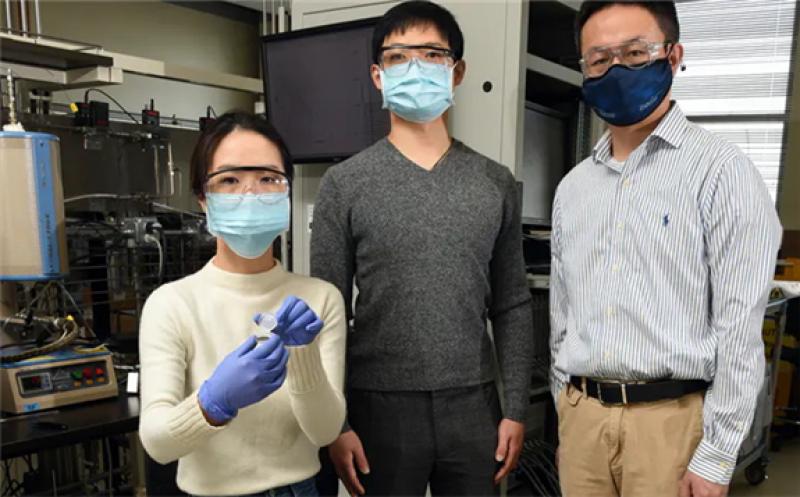An electrochemical cell that converts gaseous carbon dioxide into valuable compounds could take advantage of high-temperature technologies including next-generation advanced nuclear reactors. The cell is being developed by scientists at the US Department of Energy's Idaho National Laboratory (INL).

The protonic ceramic electrochemical cell, developed in a project funded by INL's Laboratory Directed Research and Development programme, facilitates a chemical reaction that converts captured carbon dioxide to carbon monoxide or methane, compounds which are important precursors for many industrial processes or products.
The cell uses a ceramic material that readily conducts protons (hydrogen atoms), which are provided by a simple molecule such as water. Those protons then combine with carbon dioxide in an electrochemical reaction to produce carbon monoxide or methane. The INL team, led by Senior Scientist Dong Ding, has shown that surface of the ceramic material can be fine-tuned to make it selective for precursors for either carbon monoxide or methane production.
The cell is one of the most promising technologies that can convert gaseous CO2 into useful intermediates, Ding said. "It's very hard to break carbon-oxide bonds. With this electrochemical cell, we can leverage the heat and electricity coming from renewables and nuclear energy to break the carbon-oxide bond in CO2."
The device would be located at the source of carbon emissions and would require heat and electricity to power the process, and could take advantage of high temperature technologies such as integrated energy systems that include the next generation of advanced nuclear reactors. Such reactors could be co-located with industrial plants that produce biofuel, biopower or bioproducts. The reactor's high temperature steam and electricity could then be used to recycle the bioenergy plant's carbon dioxide.
Researchers at Argonne National Laboratory, Sandia National Laboratories and Pacific Northwest National Laboratory are collaborating with Ding's team to scale up the process, with plans to use advanced manufacturing techniques to make larger electrochemical cells that will be incorporated into an integrated energy demonstration project at INL's Energy Systems Laboratory in Idaho Falls.